Self-Calibration and Instruments
The idea of making a drawing chart named BCA-I is born only after a whole trajectory of drawing ourselves as border crossers metaphorically as research instruments. This part elaborates on the period before the BCA-I existed.
What occupies us in the research studios is twofold. Firstly: how are we going to transform and redesign that little black line on maps of border regions? The cartopological way of working with this first issue is to have a look on site. The first rule is set: In order to draw the border experience, we cross a border and we call it a Border Crossing Acts (BCA). But, once crossed the border, and this is where the second issue kicks in, how to deal with the individual experience of crossing the border against a map that represents the region as a whole? Let alone, how to prevent entering the discussion on putting subjective and local against objective and general?
Having previously experienced the use of the metaphor of the research instrument to draw and calibrate our own artistic research method[1], let’s calibrate ourselves while performing BCA’s.
The first instruments are general. ‘Method’ and doing are still hidden in the drawing. The more BCA’s are executed, the completer the instruments get, even to a point that the project starts to focus more on the instrument instead of on the border, its situatedness in the field and its representation on maps. Somehow, the instrument and the field got disconnected. However, in the BCA’s the field and the border crosser are undoubtly dependent on each other. The metaphor of the instrument grows, the instrument gets more and more bits and pieces and is increasingly explaining the complexity of the project than being the project itself.
As an example, this instrument is the first one drawn for this project. A huge satellite registering everything without clear calibration on top of a sphere without specific direction. There is clearly a lot to be defined and sensitise. However, the ‘Border Recognition Radar’ reveals the ambition to do so. The second example is the last instrument drawn for this project. It elaborates strongly on the documentation and drawing process of making maps but only one tiny wheel crossing the border illustrates the fieldwork, the border crossing act.
So, the metaphor of drawing instruments to understand how border crossers work and how they perform the BCA is drifting away from the actual act of crossing a border. However, Border Encyclopedia should be about documenting the BCA in such a way that it becomes relevant and overcomes the discussion of being subjective or objective. It should argue about intimacy, performativity and the making of artistic research. Therefore, the BCA-Instrument needs to be reinvented. As such, it becomes a major part of this research project.2Veerle Spronck, Marlies Vermeulen, Remy Kroese, Drawing Instruments, Or How to Calibrate an Artist. (see below for a preview of this publication)
Metaphorical Instruments preceding the BCA-I
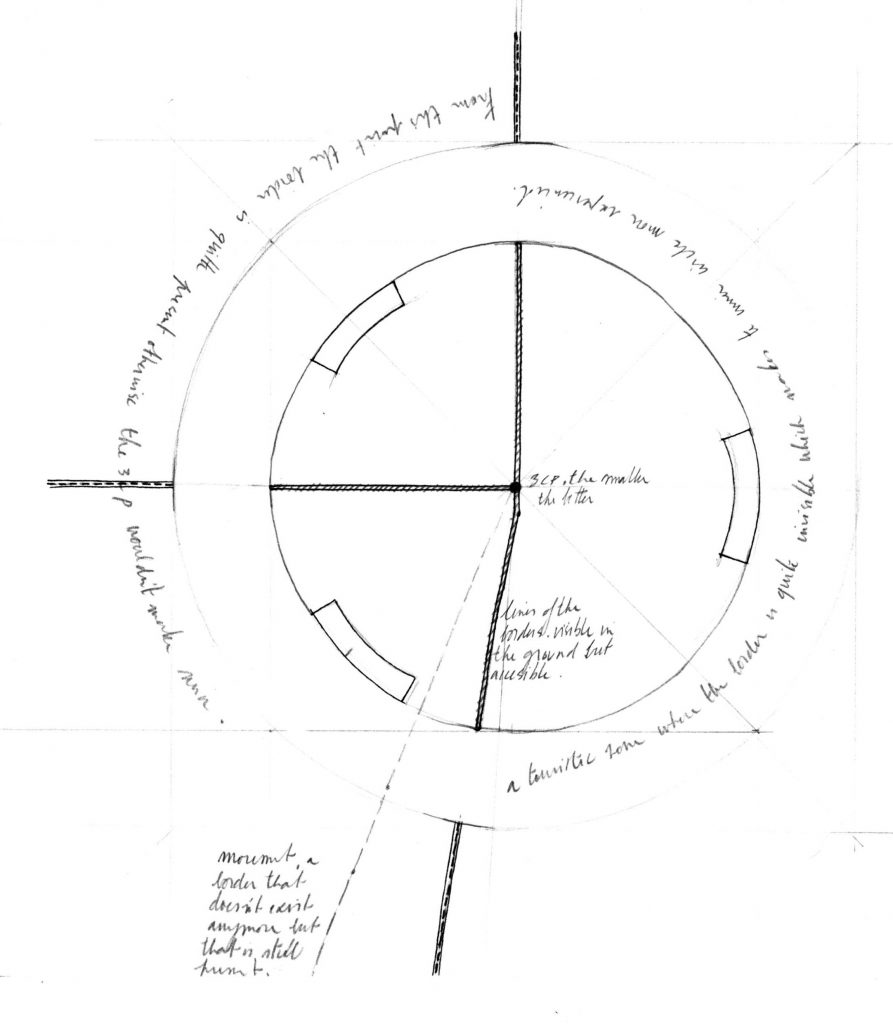
Untitled instrument (first version) 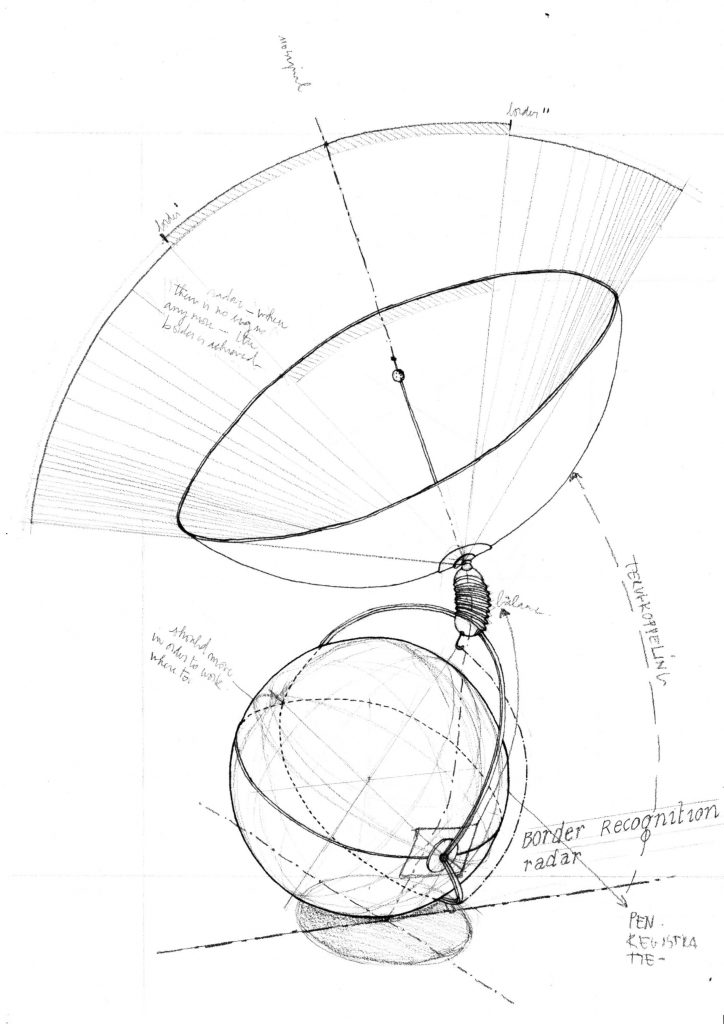
Border Recognition Radar 1.0 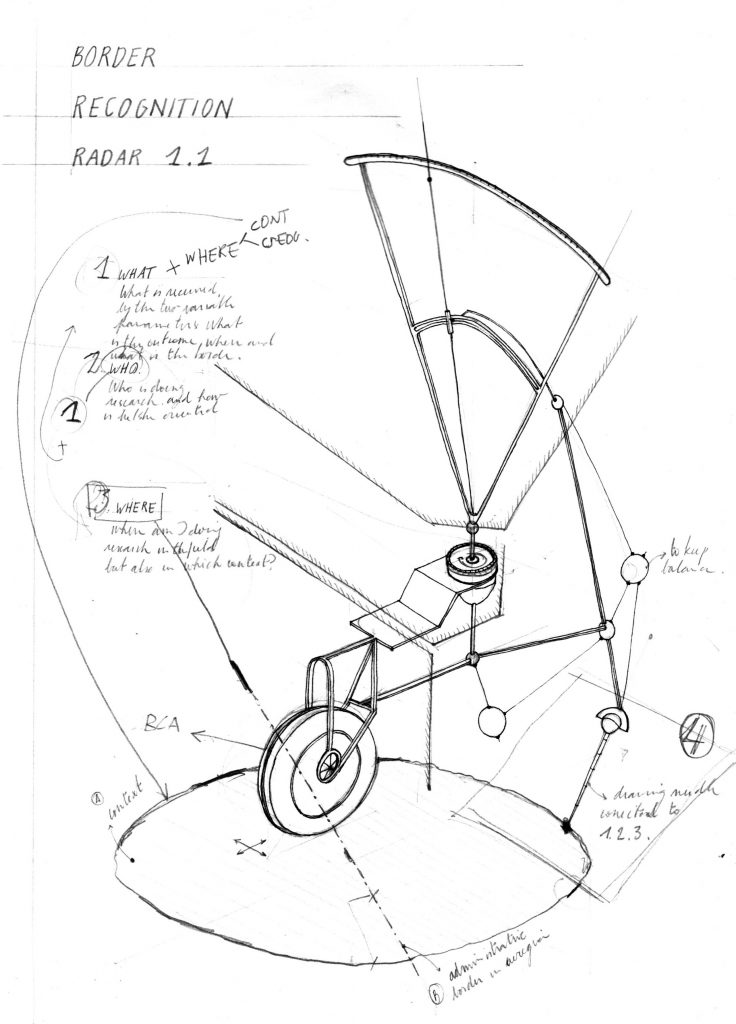
Border Recognition Radar 1.1 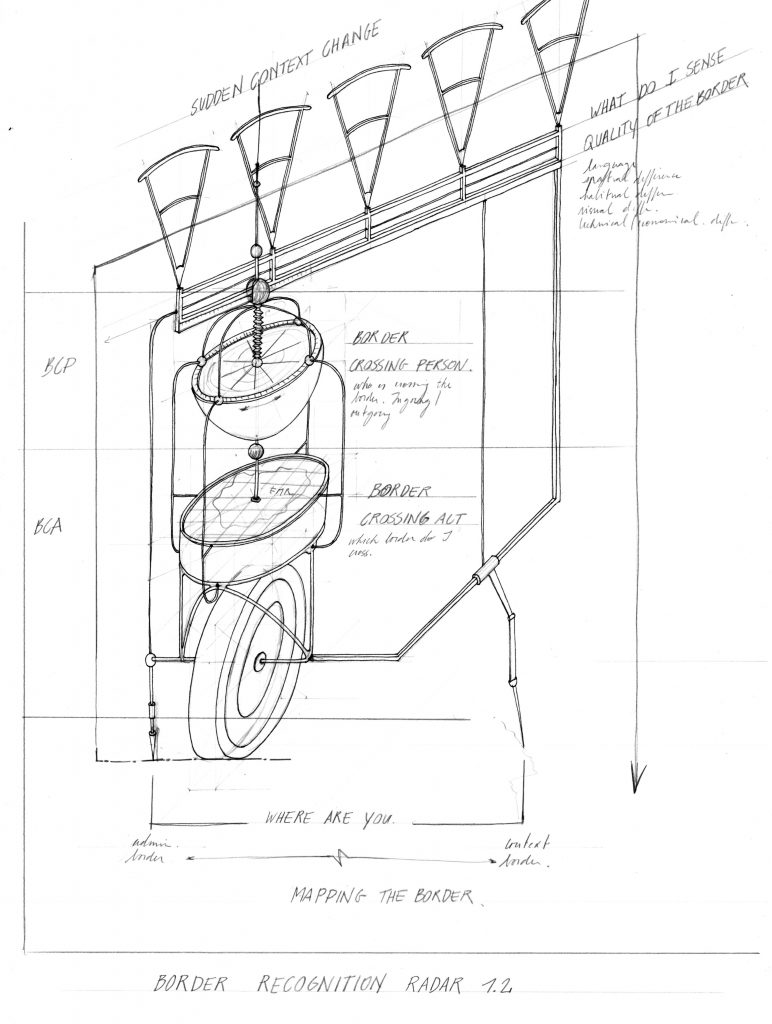
Border Recognition Radar 1.2 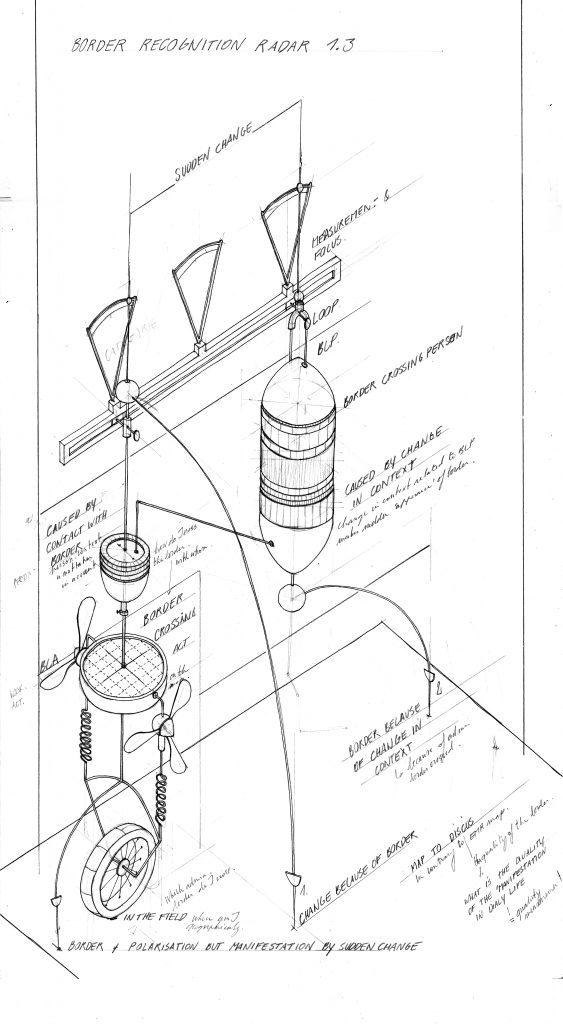
Border Recognition Radar 1.3 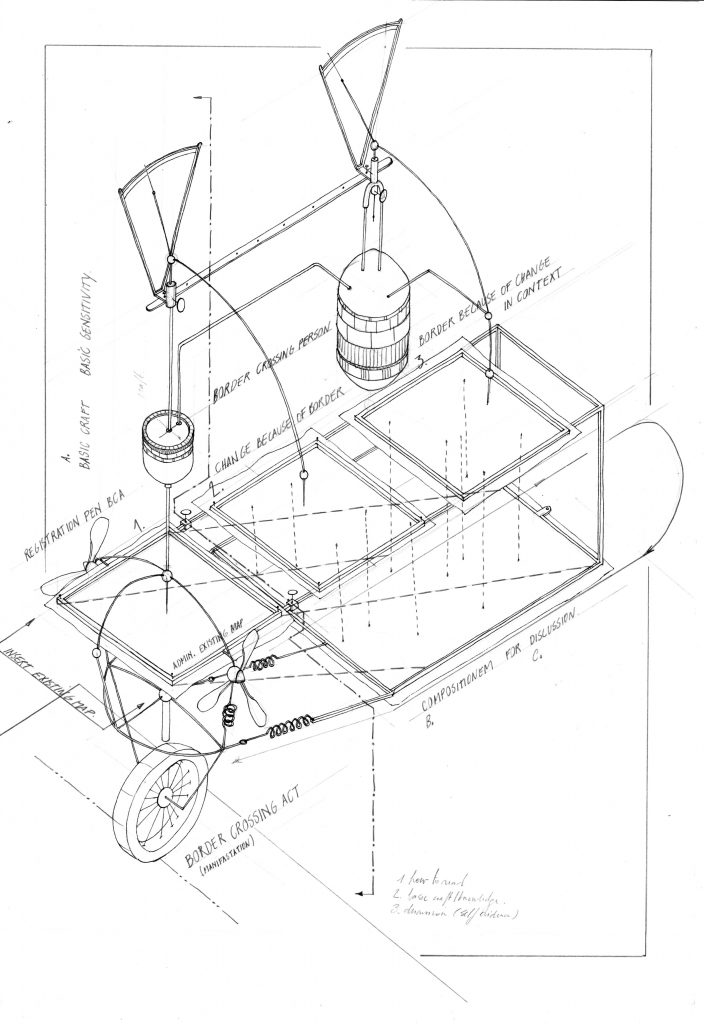
Border Recognition Radar 1.4 
Border Recognition Radar 1.5
[1] Sidestepping fundamental debates about whether art can be research, or how me might defend the arts from instrumentalization, the studio (Drawing Instrument) focused on artistic research practice. What do artistic researchers actually do and how can we talk about their work in a productive way? In line with my own work as reader of the Research Centre for Arts, Autonomy, and Public Sphere, the studio concentrated in particular on the artist-as-instrument: How is an artist-as-instrument made sensitive? What kinds of embodied, aesthetic, intimate, sensory ways of knowing are developed? How does the artist-as-instrument become attuned or calibrated? What does it probe and find out? And what kind of standards emerge along the way? In the tradition of the Research Centre and from a strong faith in thinking-through-making, these questions were addressed within the studio, rather than being solved in a theoretical frame beforehand. To discuss these questions, the studio focussed in particular on drawing: the artist-as-instrument that draws, but also the drawing of the artist-as-instrument as a way of reflecting on and honing artistic research practice. The studio was finalised in three ways: A combined exhibition and symposium (held in March 2017 in Maastricht) and a publication, all called Drawing Instruments. Ruth Benschop in Drawing Instruments, Or how to Calibrate an Artist.
[2] Veerle Spronck, Marlies Vermeulen, Remy Kroese, Drawing Instruments, Or How to Calibrate an Artist. (see below for a preview of this publication)
